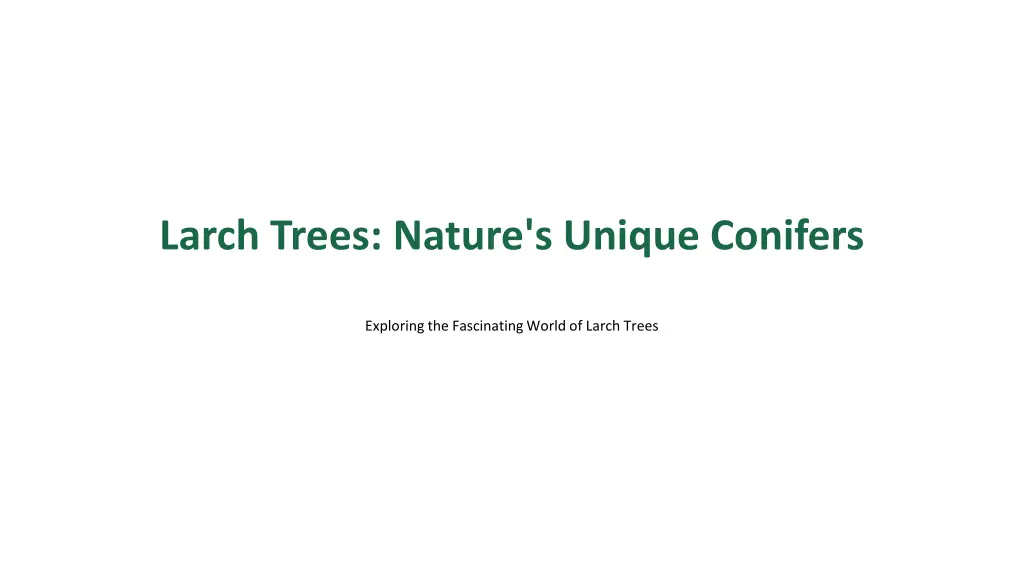
Exploring the Fascinating World of Larch Trees
Dive into the unique characteristics and ecological role of larch trees, nature's deciduous conifers found in cooler regions. Discover how these trees provide shelter, food, and help mitigate climate change while enriching their ecosystems through seasonal needle drop.
Download Presentation

Please find below an Image/Link to download the presentation.
The content on the website is provided AS IS for your information and personal use only. It may not be sold, licensed, or shared on other websites without obtaining consent from the author. If you encounter any issues during the download, it is possible that the publisher has removed the file from their server.
You are allowed to download the files provided on this website for personal or commercial use, subject to the condition that they are used lawfully. All files are the property of their respective owners.
The content on the website is provided AS IS for your information and personal use only. It may not be sold, licensed, or shared on other websites without obtaining consent from the author.
E N D
Presentation Transcript
Larch Trees: Nature's Unique Conifers Exploring the Fascinating World of Larch Trees
01 Introduction to Larch Trees Table of Contents 02 Physical Characteristics 03 Ecological Role
1 Introduction to Larch Trees Larch is a coniferous tree belonging to the pine family, known for its unique needle-like leaves. The Russian name for larch comes from the shape of its needles, resembling rolled-upleaves. Larch trees are foundin cooler regions of the NorthernHemisphere, thriving in mountainous areas. Unlike most conifers, larch trees shed their needles in winter, making them deciduous. Larch wood is valued for its durabilityand is used in construction and furniture making.
2 Physical Characteristics Larch trees have soft, needle-like leaves that turn golden yellow in autumn. The bark is thick and scaly, providingprotection against harsh weather. Larch trees produce small cones that contain seeds, essential for reproduction. These trees can grow up to 45 meters tall, with a straight trunk and conical shape. Larch trees have a deep root system, allowing them to anchor in rocky soils.
3 Ecological Role Larch forests provide shelter and food for various wildlife species. The roots help in preventingsoil erosion, especially in mountainous regions. Larch trees play a role in absorbing carbon dioxide, helping mitigate climate change. These trees support a diverse range of plant and animal life within their ecosystem. The seasonal needle drop enriches the soil with organic matter, promoting growth.
